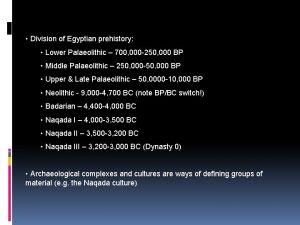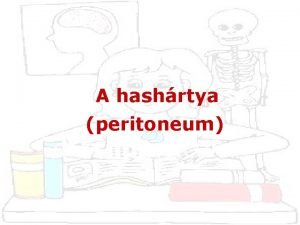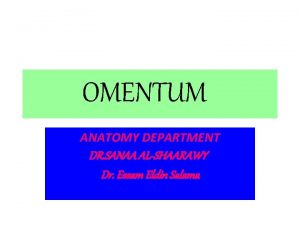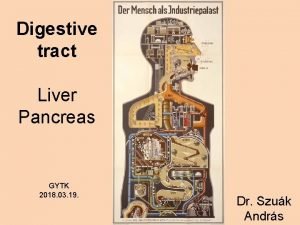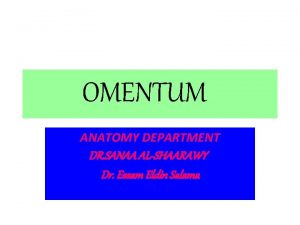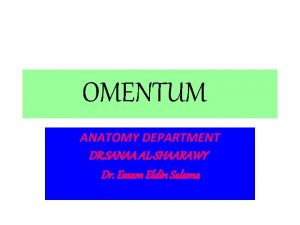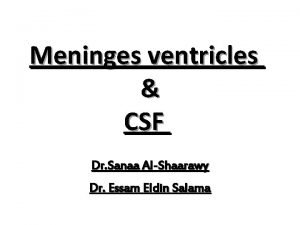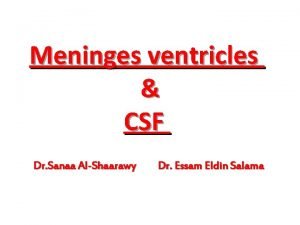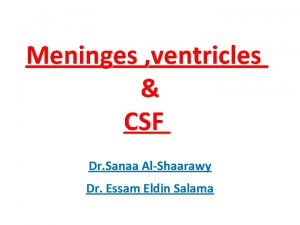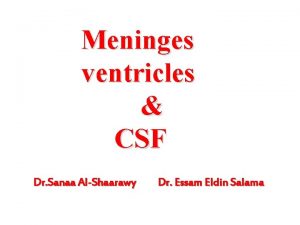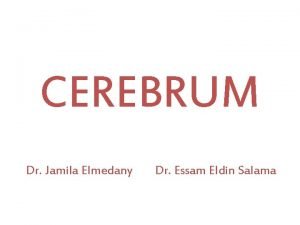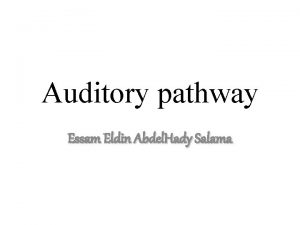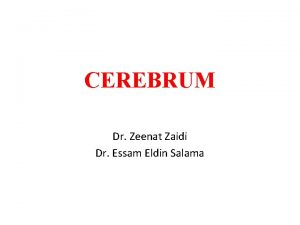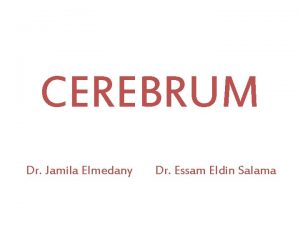OMENTUM DR SANAA ALSHAARAWY Dr Essam Eldin Salama




















- Slides: 20

OMENTUM DR. SANAA AL-SHAARAWY Dr. Essam Eldin Salama

OBJECTIVES • At the end of the lecture the students must know: • Brief knowledge about peritoneum as a thin serous membrane and its main parts; parietal and visceral. • The peritonial cavity and its parts the greater sac and the lesser sac (Omental bursa). • The omentum, as one of the peritonial folds • The greater omentum , its extends, and contents. • The lesser omentum, its boundaries, and contents. • The Omental bursa, its boundaries. • The Epiploic foramen, its boundaries.

The peritoneum v. Is a thin serous membrane, §Lining the wall of the abdominal and pelvic cavities, (the parietal peritoneum). §Covering the existing organs, (the visceral peritoneum). §The potential space between the two layers is the peritoneal cavity. Parietal Visceral


The peritoneum v. The peritoneal cavity is the largest one in the body. v. Divisions of the peritoneal cavity : §Greater sac; extends from diaphragm down to the pelvis. §Lesser sac; lies behind the stomach. §Both cavities are interconnected through the epiploic foramen. §In male : the peritoneum is a closed sac. §In female : the sac is not completely closed because it communicates with the exterior through the uterine tubes, uterus and vagina.

The peritoneum q. Intraperitonial and retroperitonial; describe the relationship between various organs and their peritoneal covering; §Intraperitonial structure; which is nearly totally covered by visceral peritoneum. §Retroperitonial structure; lies behind the peritoneum, and partially covered by visceral peritoneum. Intraperitoneal viscera Retroperitoneal viscera

Folds of the peritoneum q. The peritoneum is divided into : • Omenta. • Mesenteries. • Peritoneal ligaments.

Omenta Lesser omentum v Two layered fold of peritoneum connecting the stomach to another viscus. § The lesser omentum attaches the lesser curve of the stomach to the liver. § The greater omentum connects the greater curve of the stomach to the transverse colon. Greater omentum

Lesser omentum

Lesser omentum

Lesser omentum q Extends between the liver and the lesser curvature of the stomach. • It is continuous with the two layers of peritoneum which cover the stomach and first part of the duodenum. • Ascend as a double fold to the porta hepatis, and fissure for ligamentum venosum. • To the left of porta hepatis it is carried to the diaphragm. • Its right border is a free margin; constitutes the anterior boundary of the epiploic foramen. q Contents between the two layers of the lesser omentum : • Close to the right free margin, are the hepatic artery, the common bile duct, the portal vein, lymphatics, and the hepatic plexus of nerves. • At the attachement to the stomach, run the right and left gastric vessels.

Greater omentum

Greater omentum • The largest peritoneal fold, with cribriform appearance, contains some adipose tissue. • It consists of a double sheet of peritoneum, folded on itself so that it is made up of four layers (anterior 2 layers + posterior 2 layers). • The two layers which descend from the greater curve of the stomach and commencement of the duodenum, pass downward in front of the small intestines, then turn upon themselves, and ascend to the transverse colon, where they separate and enclose it. • The left border of the greater omentum is continuous with the gastrosplenic ligament. • Its right border extends as far as the commencement of the duodenum. • Contents : the anastomosis between the right and left gastroepiploic vessels.

Omental bursa, (Lesser Sac) q. It is a part of the peritonial cavity behind the stomach. q. Boundaries of the omental bursa ; §Anterior wall, from above downward, by the caudate lobe of the liver, the lesser omentum, back of the stomach, and the anterior two layers of the greater omentum. §Posterior wall, from below upward, by the posterior two layers of the greater omentum, the transverse colon, and the ascending layer of the transverse mesocolon, the upper surface of the pancreas, the left suprarenal gland, and the upper end of the left kidney.

Omental bursa, (Lesser Sac) Sagittal section of abdominal cavity

Epiploic foramen • It is the communication between the greater and lesser sacs. • It is bounded by; • In front by the free border of the lesser omentum, with its contents : hepatic artery, common bile duct, and portal vein between its two layers. • Behind by the peritoneum covering the inferior vena cava. • Above (roof) by the peritoneum on the caudate process of the liver. • Below (floor) by the peritoneum covering the commencement of the duodenum and the hepatic artery, before ascending between the two layers of the lesser omentum.

Omental bursa 1. IVC 2. Epiploic Foramen 3. Portal Triad 4. Lesser Sac 5. Pancreas 6. Stomach 7. Spleen 8. Kidney 9. Splenic Vein 10. Abdominal Aorta

SUMMARY • The peritoneum is divided into 2 layers : • Parietal layer, lines the abdominal and pelvic walls. • Visceral layer, covers the abdominal and pelvic organs. • Omenta are folds of peritoneum. • Lesser omentum connects the stomach and 1 st part of duodenum to the liver. • Right border of lesser omentum is free and it forms the anterior boundary of epiploic foramen. • Contents of lesser omentum : • Along lesser curvature of stomach : right & left gastric vessels. • At the right free border : • Hepatic artery. • Bile duct. • Portal vein. • Nerves, lymph vessels& fat.

SUMMARY • Greater omentum : connects the greater curvature of stomach with the transverse colon. • Contents of greater omentum : • Along the greater curvature of stomach : • Right & left gastroepiploic vessels. • Lymph nodes, vessels & fats. • Lesser sac of peritoneum (Omental Bursa) : • Boundaries : • Anterior wall. • Posterior wall. • Opening to lesser sac (epiploic foramen) : • It is a slit-like opening which connect lesser sac with greater sac. • Lies behind the lesser omentum. • Epiploic foramen is bounded anteriorly by right free margin of lesser omentum.

THANK YOU
 Greater omentum
Greater omentum Dr. essam hamza
Dr. essam hamza Baha eldin adam
Baha eldin adam Eldin fahmy
Eldin fahmy Rasha salama
Rasha salama Lukunopeus sanaa minuutissa
Lukunopeus sanaa minuutissa Merimde beni salama
Merimde beni salama Alpha particle diagram
Alpha particle diagram Sanaa zebakh
Sanaa zebakh Rasha salama
Rasha salama Mifumo mbalimbali ya fasihi
Mifumo mbalimbali ya fasihi Sanaa
Sanaa Rasha salama
Rasha salama Behavior change campaign
Behavior change campaign Carl morgan
Carl morgan Salama taktika
Salama taktika Omentum majus
Omentum majus What is epiploic foramen
What is epiploic foramen Gastric pit
Gastric pit Space of disse in liver
Space of disse in liver Orra serata
Orra serata






